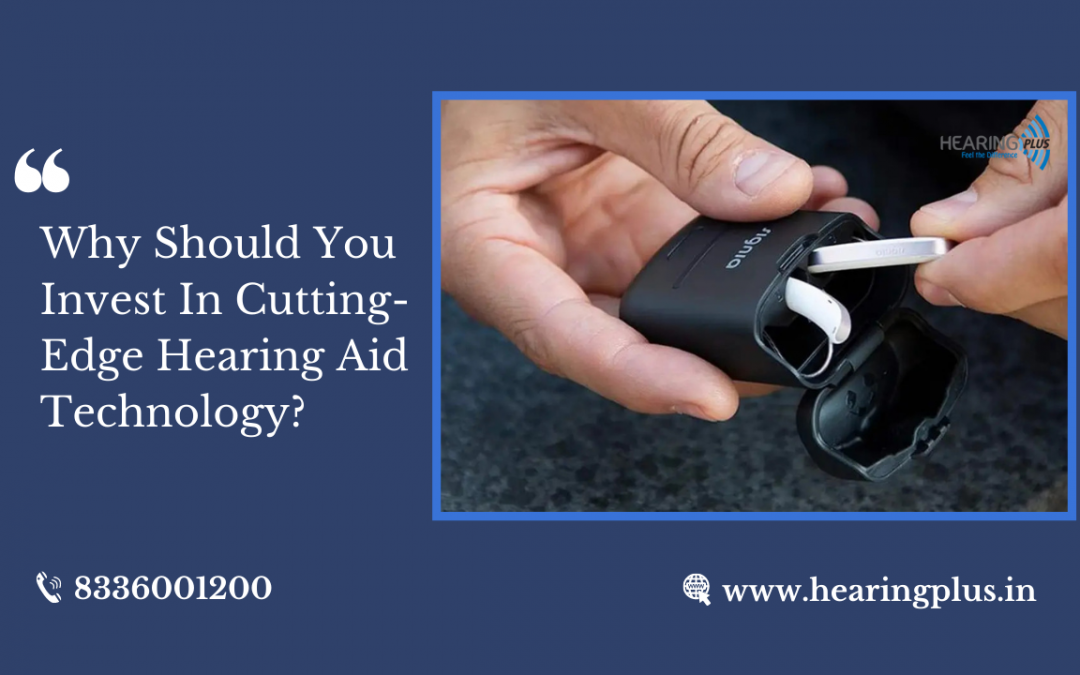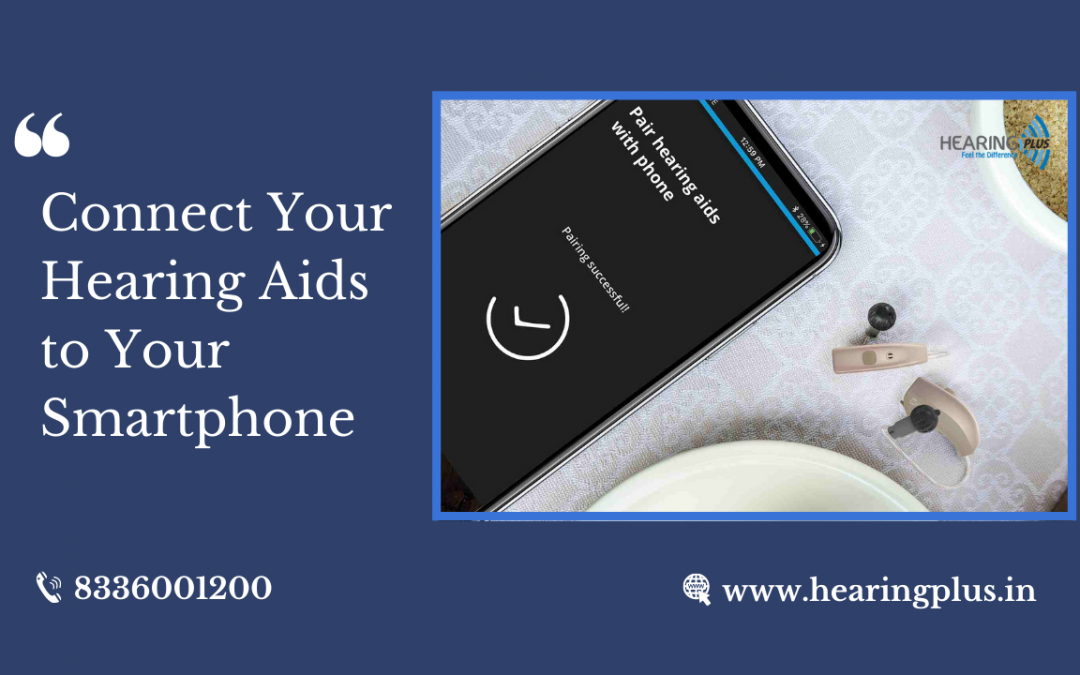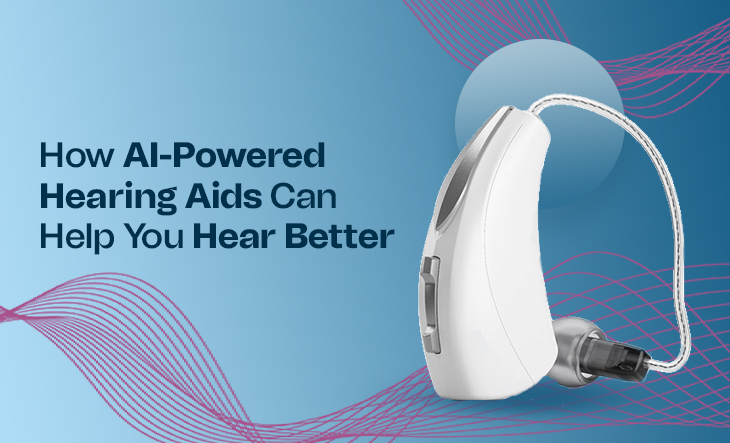
by admin | May 24, 2022 | Hearing Aids
Let’s face it: hearing aids are pricey. Who hasn’t been tempted to cut corners to save money? After all, one hearing aid is very similar to another, right?
Wrong.
Consider a hearing aid to be an investment in your physical and mental well-being and your hearing health. Saving money on the initial investment may appear enticing, but it is a mistake. If the device does not fulfill all of your demands, or you are not adequately instructed on how to adjust to life with a hearing aid, it will most likely languish in a drawer. An audiologist can be your knight in shining armour in this situation, says an expert of hearing tests in Kolkata.
Why consult an audiologist?
Audiologists are hearing specialists
An audiologist is a hearing health professional with a degree or above. When an audiologist examines the results of your hearing tests, they can evaluate tell-tale signals that if a medical disease is the core cause of your hearing loss.
An audiologist has a broader range of skills than a hearing aid dispenser and can assist you with various concerns ranging from excess earwax to tinnitus and hearing loss to learning expressive reading.
Audiologists provide specialized guidance
Improving your hearing isn’t as simple as sticking a gadget in your ear and going. It takes time and practice to learn to adapt to the re-introduction of sound. An audiologist walks you through what to expect from your hearing aids and establishes a routine to help you adjust. And if you’re still having trouble, they’re there to help, says the expert of hearing loss treatment in Kolkata.
Audiologists care about your experience
Audiologists take time getting to know the patient and then match them perfectly to the best device for them. There is no pressure to recommend a specific model because the audiologist’s goal is to deliver quality service and a precise match, not to meet a sales target to earn a fee.
Audiologists continue to learn
Audiologists are medical specialists who are required by their professional governing body to stay current, says the expert of a hearing aid clinic in Kolkata. This includes being aware of the most recent studies on hearing health, the benefits and drawbacks of various hearing devices and future breakthroughs on the horizon.
This is especially significant since, like smartphone technology, hearing aid technology evolves rapidly. They keep up with the latest models so that they can provide better advice to you.
In short, the cheapest solution isn’t always the most cost-effective in the long run. You get what you pay for when it comes to your hearing health and investing in a high-quality service from an audiologist is a worthwhile investment, says the expert of a well-known hearing aid centre in Kolkata.

by admin | May 14, 2022 | Hearing Aids
Many people feel that they are immediately incapacitated if they are diagnosed with a hearing impairment. While hearing loss may not always be regarded as a disability, it is dependent on the severity of the hearing impairment, says an expert of hearing loss treatment in Kolkata.
How much hearing loss is considered a disability?
The crucial point to remember is that we can only classify hearing loss as impairment under certain situations. Hearing loss or hearing impairment is classified as degenerative, which means it worsens with time and can be slowed by treatment. So, when is hearing loss considered a disability? In general, it is considered a disability if it comes under any of the following categories:
• Unable to repeat 40% of words in a word recognition test
• A bone conduction hearing threshold of fewer than 60 decibels (dB)
• An air conduction hearing threshold of more than 90 decibels (dB)
If you fall into one of these three categories, you may be eligible for disability benefits for your hearing loss, says the expert of a well-known hearing aid centre in Kolkata.
Is the use of a hearing aid considered a disability?
Because people have varying degrees of hearing impairment and the thresholds mentioned above classify hearing loss as a disability, wearing a hearing aid does not automatically make a person disabled.
Wearing a hearing aid assists with hearing loss, which reduces any perception of disability because they are worn to avoid worsening hearing impairments under the three thresholds set out above. As a result, simply because you wear a hearing aid does not qualify you as impaired or have a disability.
The importance of diagnosing a hearing condition
Several organizations define impairment according to the severity of the loss. The five levels of hearing impairment are commonly classified as profound, severe, moderately severe, moderate and mild. All of them necessitate the use of hearing aids, says the expert of hearing test in Kolkata.
Wearing a hearing aid gives some support, thereby diminishing or eliminating the state of disability. However, the label “disabled” carries a lot of weight. Many people define disability differently depending on their physical symptoms. An invisible impairment may be regarded lightly or neglected by most people.
Because hearing loss is a degenerative condition, if not treated properly, the situation may worsen. If you believe you have a hearing impairment, you must check your hearing regularly to ensure that you do not require extra treatment, says the expert of hearing aids in Kolkata.

by admin | Apr 23, 2022 | Hearing Aids
Hearing aid technology has advanced significantly in recent decades. Still, at their heart, hearing aids have always had four fundamental components: a microphone, a processor, a receiver and a power supply. The microphone detects sounds in your environment and sends them to the CPU. The processor improves the signal and sends it to the receiver, which sends the amplified signal to the ear canal. The system is powered by a power source, known as the battery, says an expert of hearing machine in Kolkata.
Based on the sophistication of the processor, hearing aid technology can be classified as advanced or basic. Even the most basic digital hearing aids available today provide far more benefits than the best hearing aids of previous generations.
Hearing aid technology that is new and sophisticated
As technology advances, digital hearing aids become more automated and contain additional capabilities to assist you in communicating in tough listening conditions. New innovations result in more advantages. The characteristics listed below are more likely to be found in advanced hearing aids.
Bluetooth connectivity
Bluetooth connectivity is a wireless capability that allows hearing aids to connect to mobile phones and other Bluetooth-enabled devices, usually via an intermediate device. Because the signal skips the microphone and reaches the hearing aid’s processor directly, Bluetooth technology can remove feedback from the microphone. Interference is also less common with a Bluetooth connection, says the expert of hearing aids in Kolkata.
Artificial intelligence (AI)
Some high-end hearing aids have artificial intelligence (AI), which allows them to analyze a sound using a deep neural network. Hearing aids can begin to make these modifications automatically when the sound is recognized by program preferences for specific sound environments. A DNN (deep neural network) allows hearing aids to begin to imitate how your brain would hear a sound if your hearing were normal.
Rechargeable batteries
Hearing aids are increasingly being equipped with rechargeable batteries, which eliminate the need to replace small button batteries every few days or weeks, says the expert of hearing machine in Kolkata.
What are the practical advantages of these features?
Consider yourself at a regular crowded restaurant, enjoying dinner with pals. Dishes clanking, people talking and laughing at neighboring tables and waiters hurrying around create a cacophony of sounds.
You’re wearing your new ear machines and listening to a conversation with a buddy across the table. She’s cracking a joke. Your hearing aids are simultaneously reducing impulse noises such as silverware clanging onto a plate (impulse noise reduction), decreasing the whir of the ventilation system above (digital noise reduction), suppressing the voices of people at tables behind you (directional microphone system) and storing information about the listening environment for later fine-tuning (data logging).
They’re doing all of this automatically while boosting and modifying your friend’s voice signal. You may now relax and enjoy the punch line.

by admin | Apr 21, 2022 | Hearing Aids
There are an increasing number of hearing aids designed specifically for smartphones. This technology allows you to send audio directly from your smartphone to your hearing aids. In a nutshell, your hearing aids can function as wireless headphones. Not all Bluetooth hearing aids are smartphone-compatible; only those labeled Made for iPhone or Made for Android are, says an expert of rechargeable hearing aids in Kolkata.
The good news is that they are simple to set up — the technology does most of the work for you! The concept is the same whether you have Apple or Android phone compatible hearing aids. The ear machine specialist explains below how you can connect your hearing aids to your smartphone.
How to connect your hearing aids to your smartphone?
Turn on your Bluetooth device
Navigate to the Settings app on your iPhone or Android device. Locate Bluetooth (it should be near the top of the menu), select it and turn it on.
Find your hearing aids on the list
Return to the Settings app on your iPhone. Scroll down to Accessibility and click on it. Scroll about halfway down that menu until you find Hearing Devices and click on it. Your hearing aids should be on the list, says the specialist of hearing aid fitting in Kolkata.
When you switched on Bluetooth on your Android phone, it should have begun “searching” for other Bluetooth-enabled devices to connect to. Your hearing aids should be listed within seconds.
If your phone does not identify your hearing aids within a few seconds, you may need to open and shut the battery doors or charge them. This turns them off and then back on, which should assist your phone in locating them, says the expert of hearing aid reprogramming in Kolkata.
Choose your hearing aids
When your phone finally recognizes your hearing aids as an option, choose them. They will begin to link, which might take up to 30 seconds or more.
Connecting Your Hearing Aids to Other Devices
Streamers for smartphones
You can still wirelessly stream audio from your smartphone to your hearing aids if your hearing aids aren’t Made for iPhone or Made for Android. It just requires a single, tiny wireless gadget known as a streamer, which attaches to your collar or hangs from your neck and maybe hidden behind your clothing.

by admin | Apr 18, 2022 | Hearing Aids
When you think about artificial intelligence, images of all-powerful robots right out of Hollywood may spring to mind (AI). But forget about the machines taking over: AI makes them work better when it comes to your hearing aids, says an expert of hearing aids in Kolkata.
Researchers are discovering new methods to harness this technology and apply it to enhance hearing aids month after month, year after year. Here’s what you need to know about how AI is used in hearing aids—and if a hearing aid with this feature is good for you or a loved one.
How AI is used in hearing aids
The AI that occurs in hearing aids has been happening for years. Over the last several years, AI has progressed much further—it now genuinely listens to what the environment is doing. And it reacts appropriately. A deep neural network (DNN) essentially allows hearing aids to begin to simulate how your brain would hear the sound if your hearing were normal.
Hearing aids must adapt to a person’s particular hearing demands and various types of background noise situations to function properly. AI, machine learning and neural networks are excellent techniques for dealing with such a complex, nonlinear, multivariable problem, says the expert of hearing loss treatment in Kolkata.
Is AI required in hearing aids?
Some people with hearing impairment may not require all of the features of AI. For example, people who live alone or rarely leave the house and do not frequently find themselves in crowded situations may not benefit from the functionality found in higher-end models.
However, for anybody who spends a lot of time outside, especially in the circumstances with large soundscapes, AI-powered features allow for a better hearing experience.
The listener’s effort is lessened
Memory recall is a key indicator of “improvement,” which can be measured in various ways. It’s not that hearing aids improve a person’s memory. It is the fact that artificial intelligence allows people to spend less time trying to make sense of the noise around them, a process known as “listening effort.”
When a person’s listening effort is more natural, they can focus more on the conversation and all of the nuances conveyed within it. It allows the brain to function in the most natural manner possible.
For more details, contact Hearing Plus, a hearing aid centre in Kolkata.

by admin | Feb 25, 2022 | Hearing Aids
What’s holding you back from using a hearing aid?
For many people, this is because they’re “Not ready for a hearing aid yet.” They might perceive hearing loss as linked to older people (Not true! With one in five people suffering from hearing loss, a great number are younger.) Rightly or wrongly, some people perceive that wearing a hearing device is aging which is where a near-invisible hearing aid could be the answer.
Why do people choose invisible hearing aids?
Miniaturization
The wonders of miniaturization and digital technology mean that you can have it all: small size and amplification. The completely-in-the-canal hearing device is made to fit all the parts (microphone, amplifier, and receiver) within the ear canal.
This means there’s no need for external parts, such as housing behind the ear.
Your secret
Because the CIC does what it says on the label and sits entirely in the ear canal, the ear machine is nearly invisible to the observer. The device is only visible to those staring directly into your ear canal, which would be a pretty unusual situation.
Self-adjusting
The small size of the CIC means that they are automated, with no buttons or dials that need adjusting to change programs. Instead, they are self-adjusting, which again adds to another level of discretion. Without the need to change programs in different hearing environments, there’s no need to draw attention to the device.
Listening comfort
The CIC sits deep in the canal, which allows your outer ear to do its job of shielding your hearing from wind noise. The deep location of the hearing machine also means you can comfortably hold a phone to your ear in a natural position. And another bonus is there is no external tubing to tangle with your spectacles if you wear glasses.
Restore confidence
A CIC means better hearing, but it can be your little secret. This means renewed confidence in a work or social environment. Indeed, research shows us that correcting hearing loss protects both mental and physical health.
And finally, there are many advantages to a CIC hearing device, but they aren’t suitable for everyone. The CIC is powerful enough to correct mild to moderate hearing loss, but a more powerful device may be needed for those with more severe impairment. However, the good news is there are now many amazingly discrete hearing devices to suit all levels of hearing impairment. Speak to an audiologist who will be happy to advise you.
Contact Hearing Plus, a hearing machine center, if you suffer from hearing loss.






